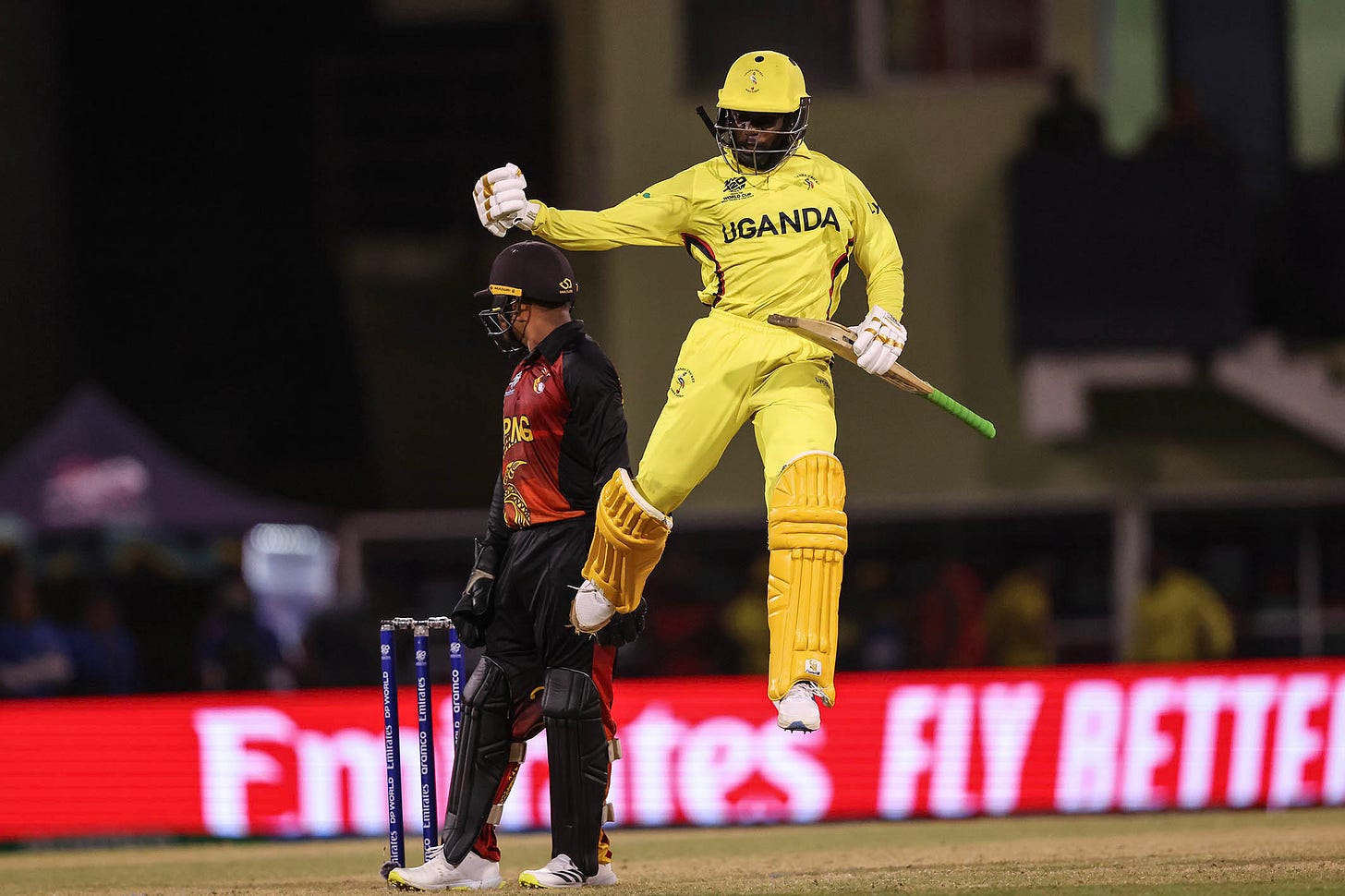Uganda cricket triumphs in spite of its sticky wicket
Despite its steady growth and on-pitch success, Ugandan cricket still faces plenty of challenges, especially funding.
Kalungi Kabuye

On Wednesday afternoon in Guyana – it was the early hours of Thursday morning for fans who stayed awake in Kampala – the Ugandan men’s national cricket team earned their first win at their first-ever T20 World Cup, beating Papua New Guinea by three wickets. In a T20, teams have just 20 overs to bat – they get 50 overs in the longer format.
The team celebrated like they had won the trophy, and with good reason: this is an against-all-odds story that has its roots not just on the country’s handful of cricket pitches, but also in one of Uganda’s darkest chapters.
Although Uganda has never been in a cricket World Cup before, two Ugandan players have: the legendary John Nagenda and Sam Walusimbi appeared in the 1975 edition, as part of the East and Central Africa Combined team. This was the very first major tournament in the One Day International format of the game. Walusimbi (38 runs in three games) and Nagenda (one wicket for 50 runs in nine overs) acquitted themselves admirably.
There should have been more Ugandans in that combined team. Just three years earlier, however, president Idi Amin had summarily expelled all residents of Indian origin, saying he was “giving Uganda back to ethnic Ugandans”. The expulsion order affected tens of thousands of people, who were given just 90 days to leave the country. Among them were most of the country’s cricketers.
“When Idi Amin expelled the Indians in 1972, we had to take it upon ourselves to not only revive the game, but keep it from collapsing completely,” Walusimbi said during a testimonial held in his honour two years ago. “Those were very difficult times, but we managed to not only form clubs and keep playing, but by 1975 John and I managed to make it to the World Cup. It was incredible.”
But the situation in Uganda continued to deteriorate, with many people fleeing the country into exile. Civil unrest meant organised cricket could not be played till the late 1980s and early 1990s.
It was not until 2001 that Uganda started competing internationally again, participating in the ICC Trophy in Toronto, Canada, a qualification event for the 2003 Cricket World Cup. Ranked 22nd, the Cricket Cranes ended up finishing in tenth place.
The Uganda Cricket Association then embarked on a development programme to take the game to the youth, including the Uganda Schools Development and the Mini Cricket Development programme. It developed mass-participation projects like Mini Cricket, National Leagues and U-19 and U-23 programmes, which attracted players, partners and sponsors.
Since that first time in Toronto, the Cricket Cranes have tried three times to qualify for the World Cup, coming agonisingly close.
Qualification for the current T20 World Cup, being held in the United States and West Indies, was secured in November last year when the Cranes beat highly-fancied Zimbabwe – a “crowning moment” for Ugandan cricket, captain Brian Masaba said at the time. Wednesday’s win against Papua New Guinea was another big moment. “Getting to the World Cup was special, but this is more,” Masaba said after the game.
Despite its steady growth and on-pitch success, Ugandan cricket still faces plenty of challenges, especially funding.
A hopelessly inadequate national budget for sports is not equitably divided, with football taking almost 50% – despite the national team not qualifying for an international tournament since 1978. By contrast national netball, rugby and now cricket teams have all played in a World Cup, but get less than 3% of the budget.
Just as concerning is the announcement by the government that a Turkish firm has been contracted to develop a new sports complex – on the site where the national cricket oval has stood for 80 years. So in their moment of greatest triumph, the cricketing Cranes are now homeless.
That, however, is a worry for another day. For now, the team must prepare for its remaining group games against the West Indies and New Zealand – and who can rule out another upset?



